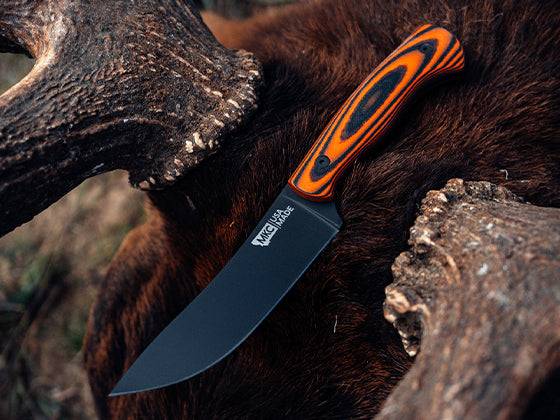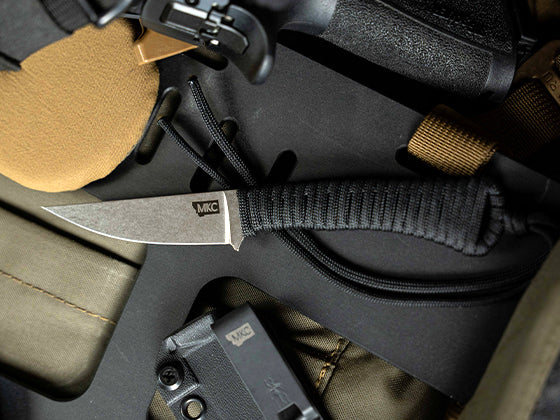The sun is setting on your campsite, the temperature is dropping, and you’re getting hungry. You can build a fire in minutes if you have a sharp hatchet — a dull hatchet, not so much.
You get the most out of your knives by keeping them sharp and ready for use. The same is true for your axe or hatchet. A sharp hatchet edge can split firewood, shave wood for kindling, and even dress an entire buck when you’re in a pinch.
Your hatchet blade’s edge geometry is different from that of your knives, which can make the sharpening process challenging. Don’t worry — we’re here to help. In this post, we’ll explain how to sharpen a hatchet (or an axe).

What Are the Signs Your Hatchet Needs Sharpening?
Your hatchet or axe chops through brush and roots, but while chopping, it often encounters rocks that damage and dull the blade. To gauge whether it’s time for axe sharpening, you can perform a simple visual test.
Do you see flat spots or dings along the blade’s edge? If so, it’s time to sharpen. If not, scrape the blade across the surface of a piece of wood. If it doesn’t raise any shavings or burrs, grab your sharpening tool of choice.
Two Popular Sharpening Methods
There are two common methods for sharpening an axe or hatchet.
You can use a belt-driven grinder to achieve a sharp edge in a short amount of time. Though this method is speedy, you’ll want to avoid using a bench grinder that runs a stone, as the stone can run hot enough to damage the finish of your hatchet.
You can also refresh the edge by hand using rough and fine bench stones. This method requires more effort and time but produces great results.
A friendly reminder: Don your safety glasses before working with any power tools. Dirt, metal, sparks, and other flying debris can seriously damage your eyes.
Belt Grinder Sharpening
Let’s look at how to sharpen a hatchet with a belt grinder. For reference, we’re using the Ken Onion Knife and Tool Sharpener from Work Sharp.
Start with a coarser grit belt and hold the blade at a 25-degree angle, pressing lightly. Your goal is to remove imperfections and dents along the blade’s edge. Do the same for both sides of the hatchet. Then, repeat the process with progressively finer belts until you reach the desired sharpness.
Bench Stone Sharpening
The old-fashioned method of hatchet and axe sharpening — using a bench stone — gives you complete control over the sharpening process. Also called a whetstone, oil stone, or sharpening stone, a bench stone has a layer of lubricant that, when combined with the stone’s grit, polishes blades efficiently.
First, determine the factory angle of your hatchet. Work one side of the blade against the coarse side of the stone until you feel a burr. Next, flip the hatchet and work the opposite side of the blade until you again feel a burr. Alternate from one side to the other until you achieve a fine edge.

Maintain Your Hatchet’s Edge
Once you’ve achieved your desired sharpness, use a leather strop to maintain the edge. MKC’s leather strop has just enough grit to give your hatchet a quick restorative polish between sharpenings.
Also, apply a layer of blade wax to protect your hatchet from oxidization and rust. MKC’s Blade Wax combines beeswax and carnauba wax with coconut oil and a bit of lemon oil, which acts as an antimicrobial and antifungal agent.
When your hatchet is freshly sharpened and covered in a protective coat of blade wax, you can rest easy knowing it’ll be ready for your next adventure.







































